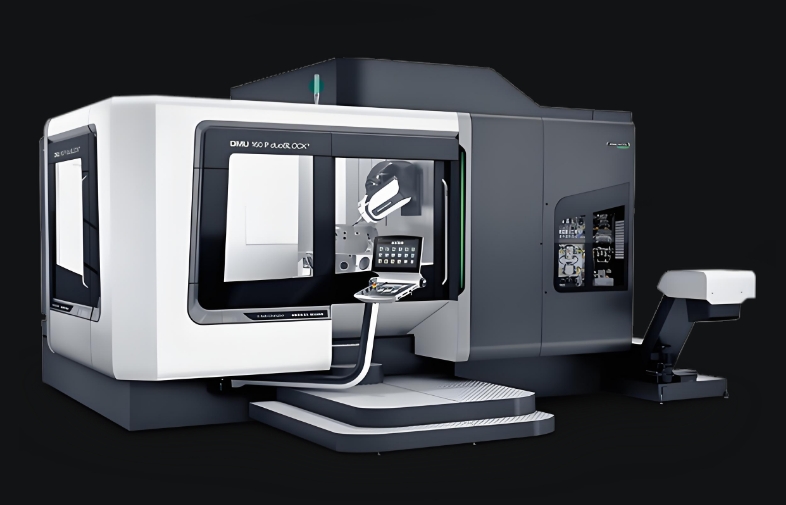Introduction
In the world of precision engineering, achieving part accuracy to the level of 0.001mm is a challenging yet attainable goal. This level of precision is required in various industries, including aerospace, medical devices, and electronics, where even the smallest deviation can have significant impacts on performance. This article explores the core principles, techniques, and technologies used to achieve ultra-precise part tolerances and outlines the best practices to maintain and measure such precision.

1. Understanding Part Accuracy
Defining Part Accuracy in Manufacturing
Part accuracy refers to the degree to which a manufactured part matches its intended design specifications. Achieving an accuracy of 0.001mm means that the manufactured part must be within one-thousandth of a millimeter of its intended measurements. This level of precision is often required for high-performance components where tight tolerances are crucial.
Importance of Achieving 0.001mm Precision
In industries such as aerospace, medical devices, and high-end electronics, a 0.001mm tolerance ensures that parts will fit and function properly in their respective systems. Even small deviations can lead to malfunctions, failure of systems, or performance issues, making the precision of each part critical for overall system integrity.
2. The Science Behind Precision Engineering
Material Properties and Their Impact on Accuracy
The material used for machining plays a significant role in achieving tight tolerances. Different materials expand and contract at different rates, affecting the precision of machining processes. Materials such as stainless steel, titanium, and special alloys are often chosen for their stability and ability to hold tight tolerances.
Forces Affecting Precision in Machining
Various forces impact the machining process, including cutting forces, thermal expansion, and vibrations. These forces can introduce errors in machining, leading to deviations in the final part dimensions. Controlling these forces is essential for achieving the desired accuracy.
3. Machining Techniques for Achieving 0.001mm Accuracy
CNC Machining and Its Capabilities
CNC (Computer Numerical Control) machining is one of the most commonly used methods for achieving high-precision parts. Advanced CNC machines can be programmed to perform complex cuts with incredible accuracy, often achieving tolerances as tight as 0.001mm. However, the machine setup, tooling, and operation must be precise to ensure such accuracy.
EDM (Electrical Discharge Machining)
EDM is another technique used for achieving precise tolerances. This method uses electrical discharges to erode material from the workpiece, allowing for extremely fine cuts. EDM is particularly useful for materials that are difficult to machine using conventional methods and can achieve tolerances down to 0.001mm.
Ultra-Precision Grinding
Ultra-precision grinding is a process that involves grinding a material to achieve extremely tight tolerances. It uses super-abrasive wheels and precise machine setups to ensure the part dimensions are accurate to 0.001mm. This method is ideal for achieving both surface finish and dimensional accuracy.
4. Quality Control and Measurement Systems
Tools for Measuring Part Accuracy
To ensure that the parts meet the 0.001mm tolerance, high-precision measurement tools such as micrometers, coordinate measuring machines (CMM), and laser scanners are used. These tools help verify that the manufactured parts meet the required specifications.
Methods for Ensuring Consistent Accuracy
Maintaining accuracy requires ongoing monitoring and inspection during the manufacturing process. Statistical process control (SPC) methods, such as in-process measurements and real-time feedback loops, are employed to ensure the accuracy of parts throughout production.
5. Material Selection for High Precision
How Material Properties Influence Machining Accuracy
Certain materials are better suited for achieving high precision due to their mechanical properties. For instance, metals like titanium and tool steels are preferred in high-precision applications due to their minimal thermal expansion, which reduces dimensional changes during machining.
Best Materials for Achieving 0.001mm Precision
Some of the best materials for achieving 0.001mm tolerance include stainless steel, high-carbon steel, and specialized alloys. The choice of material is driven by the intended application and the specific machining techniques that will be used.
6. Environmental Factors Affecting Part Accuracy
Temperature Control and Its Impact
Temperature is one of the most significant environmental factors that can affect part accuracy. Even slight fluctuations in temperature can cause materials to expand or contract, which may lead to inaccuracies. Therefore, precision machining environments often employ temperature control systems to maintain a stable environment.
Vibration and Its Effects on Machining
Vibrations during machining can introduce errors and affect part accuracy. High-precision machining often requires vibration isolation systems to ensure that the machine tools and workpieces remain stable during the machining process.
7. Maintaining Precision: Best Practices
Calibration and Maintenance of Machinery
To achieve consistent part accuracy, regular calibration and maintenance of machinery are essential. CNC machines and other precision equipment must be regularly checked for alignment, wear, and other potential issues that could affect accuracy.
Employee Training and Process Optimization
Training skilled operators is vital in maintaining high-precision machining standards. Proper process optimization, including tool selection, machine setup, and speed adjustments, also plays a key role in achieving 0.001mm accuracy.
8. Case Studies of Achieving 0.001mm Accuracy
Industry Examples
In the aerospace industry, components such as turbine blades and precision gears are often manufactured with 0.001mm tolerances. These parts must undergo rigorous inspection and testing to ensure that they meet stringent performance standards.
Lessons Learned from Real-World Applications
Many manufacturers have successfully achieved 0.001mm accuracy by implementing advanced machining techniques and maintaining a high level of quality control throughout production. Real-world case studies demonstrate the importance of proper machinery, skilled operators, and precise measurement systems.
9. Conclusion
Achieving part accuracy of 0.001mm is a challenging but attainable goal in precision manufacturing. By employing advanced machining techniques, selecting the right materials, maintaining a controlled environment, and implementing robust quality control systems, manufacturers can consistently produce high-precision parts. As industries continue to demand increasingly tight tolerances, mastering the art of achieving 0.001mm accuracy will remain at the forefront of precision engineering.






